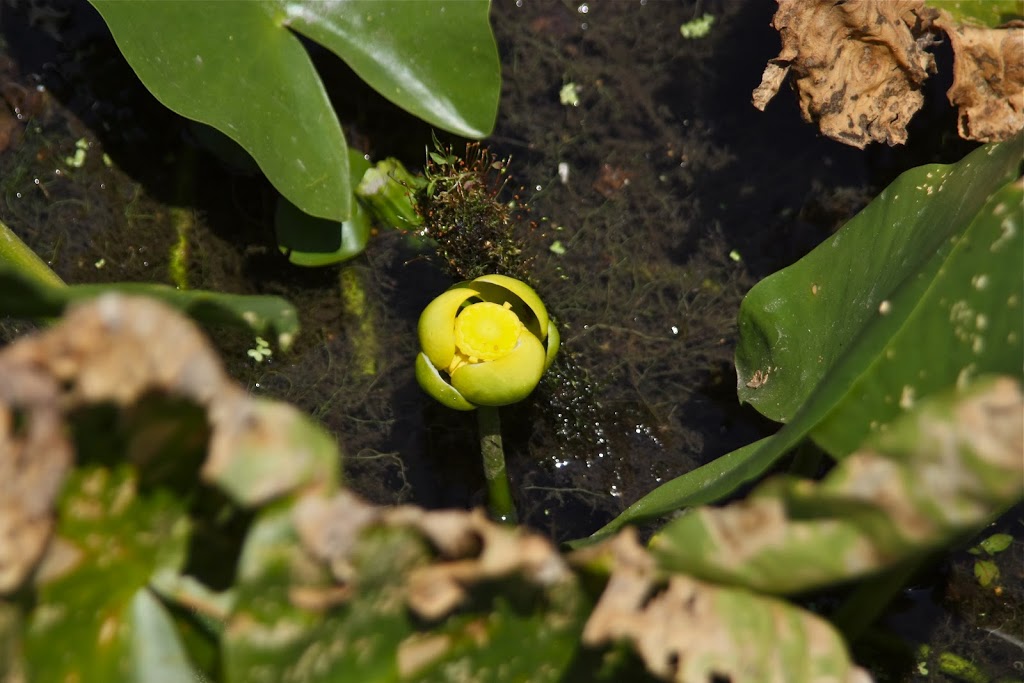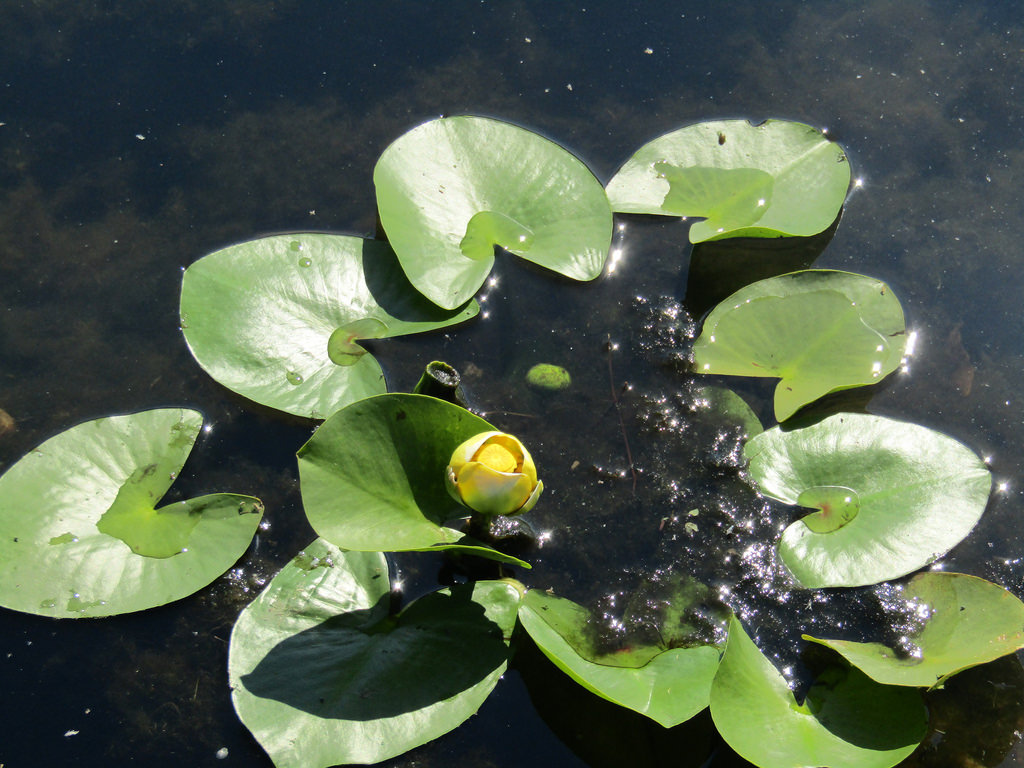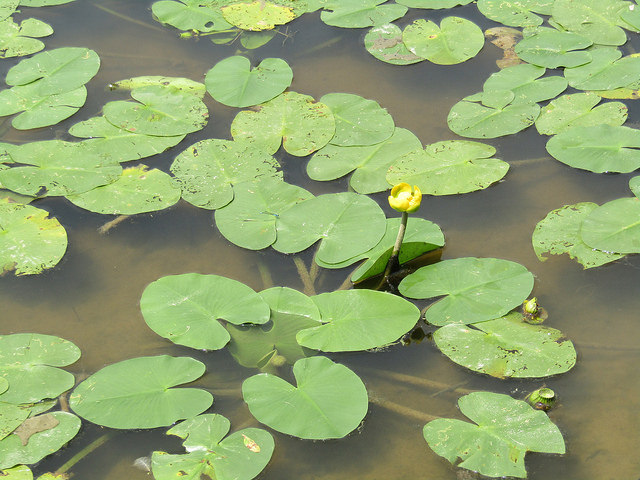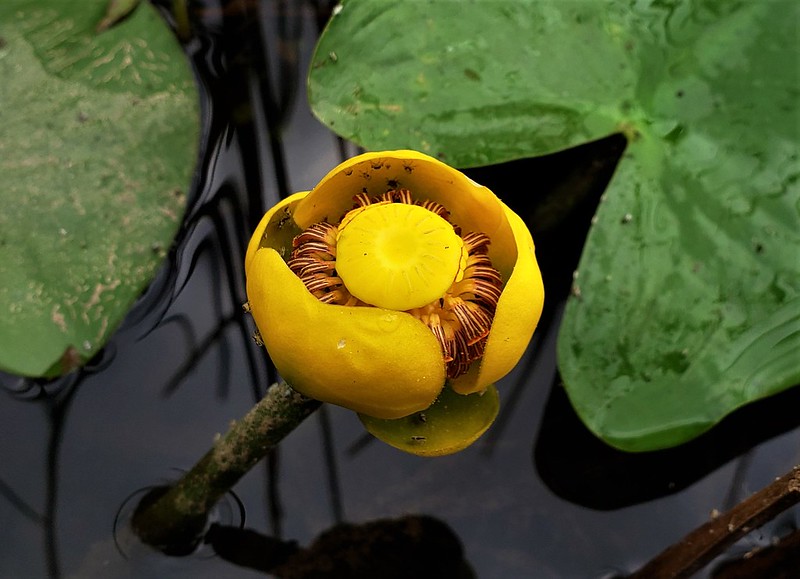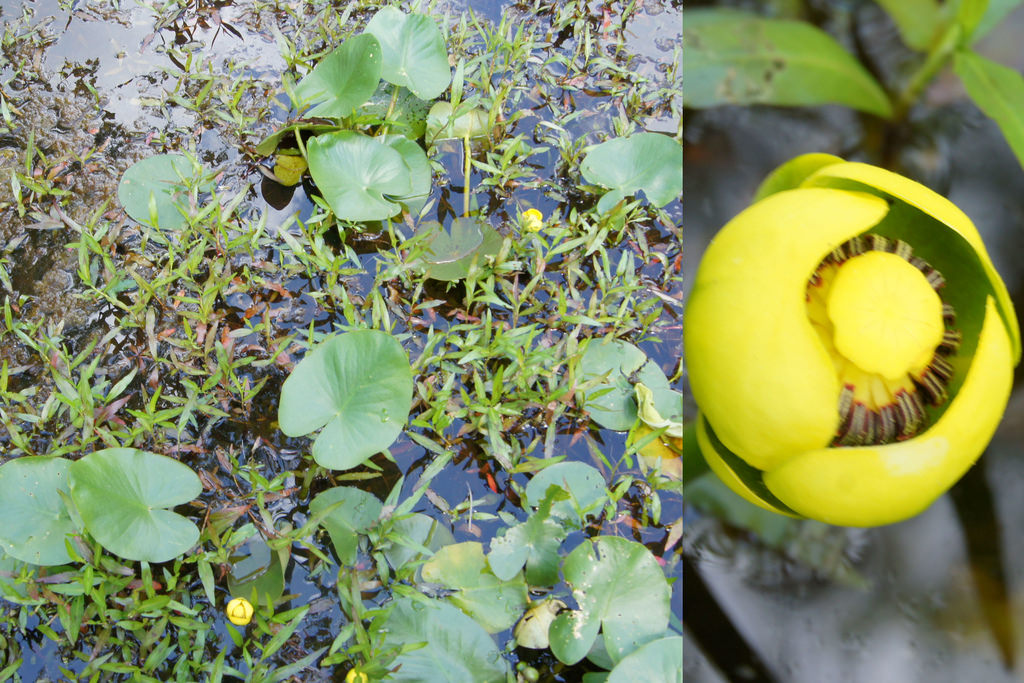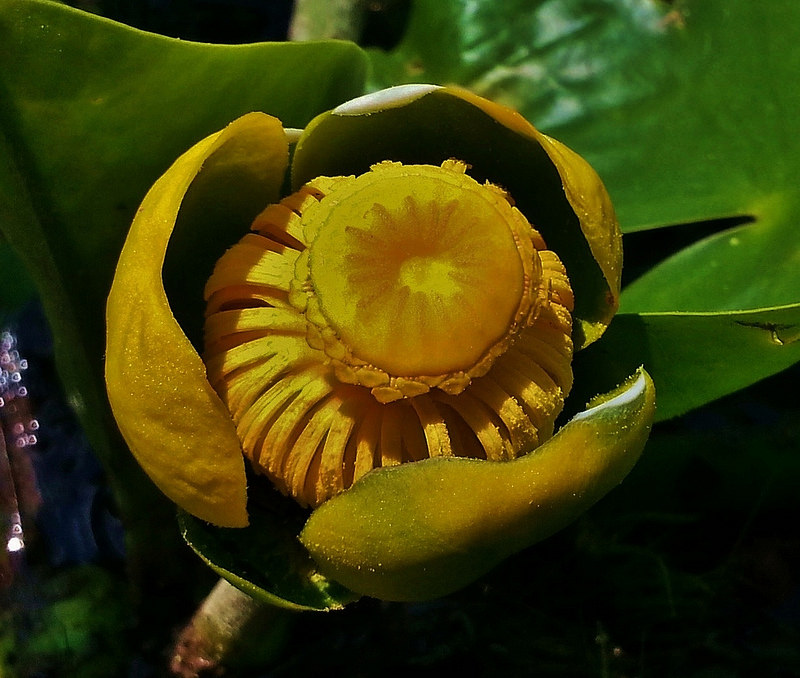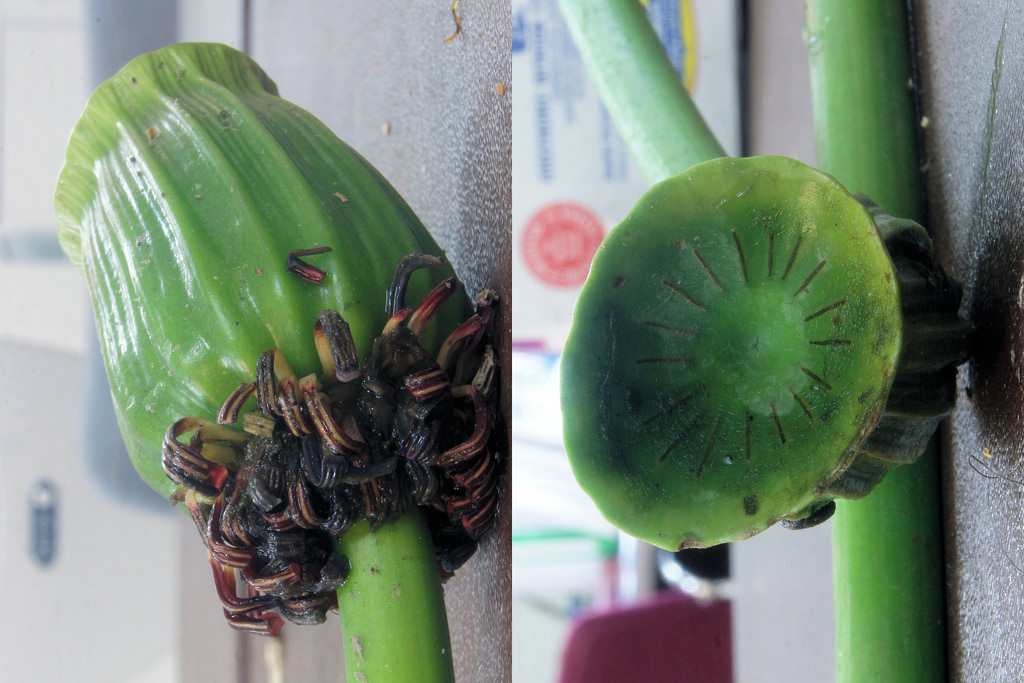Map Snapshot























438 Records
Seasonality Snapshot
Source: Wikipedia
| Nuphar advena | |
|---|---|

| |
| Scientific classification | |
| Kingdom: | Plantae |
| Clade: | Tracheophytes |
| Clade: | Angiosperms |
| Order: | Nymphaeales |
| Family: | Nymphaeaceae |
| Genus: | Nuphar |
| Section: | Nuphar sect. Astylus |
| Species: | N. advena
|
| Binomial name | |
| Nuphar advena | |
| Synonyms | |
|
Nuphar lutea subsp. advena | |
Nuphar advena (spatterdock or cow lily or yellow pond-lily) is a species of Nuphar native throughout the eastern United States and in some parts of Canada, such as Nova Scotia.[2][3] It is similar to the Eurasian species N. lutea, and is treated as a subspecies of it by some botanists,[4] though differing significantly in genetics.[2]
It is locally naturalized in Britain.[5]
Cytology
[edit]The chromosome count is 2n = 34.[6] The chloroplast genome is 160866 bp long.[7]
Conservation
[edit]The NatureServe conservation status is T5 Secure.[1]
Uses
[edit]Spatterdock was long used in traditional medicine, with the root applied to the skin and/or both the root and seeds eaten for a variety of conditions. The seeds are edible, and can be ground into flour. The root is edible too, but can prove to be incredibly bitter in some plants.[8]
References
[edit]- ^ a b NatureServe. "Nuphar lutea subsp. advena". NatureServe Explorer. Arlington, Virginia. Retrieved December 7, 2024.
- ^ a b "Nuphar advena in Flora of North America @ efloras.org". www.efloras.org. Retrieved 2024-12-08.
- ^ "Nuphar advena". Germplasm Resources Information Network. Agricultural Research Service, United States Department of Agriculture. Retrieved 10 January 2018.
- ^ NRCS. "Nuphar lutea". PLANTS Database. United States Department of Agriculture (USDA).
- ^ "Welcome to Plant Atlas 2020 | PlantAtlas". plantatlas2020.org. Retrieved 2024-12-08.
- ^ Pellicer, J.; Kelly, L.J.; Magdalena, C.; Leitch, I.J. (August 2013). Bainard, Jillian (ed.). "Insights into the dynamics of genome size and chromosome evolution in the early diverging angiosperm lineage Nymphaeales (water lilies)". Genome. 56 (8): 437–449. doi:10.1139/gen-2013-0039. ISSN 0831-2796. PMID 24168627.
- ^ Gruenstaeudl, Michael; Nauheimer, Lars; Borsch, Thomas (November 2017). "Plastid genome structure and phylogenomics of Nymphaeales: conserved gene order and new insights into relationships". Plant Systematics and Evolution. 303 (9): 1251–1270. doi:10.1007/s00606-017-1436-5. ISSN 0378-2697.
- ^ "Cow-lily (Nuphar spp.)". www.northernbushcraft.com. Retrieved 2024-12-08.
External links
[edit]


